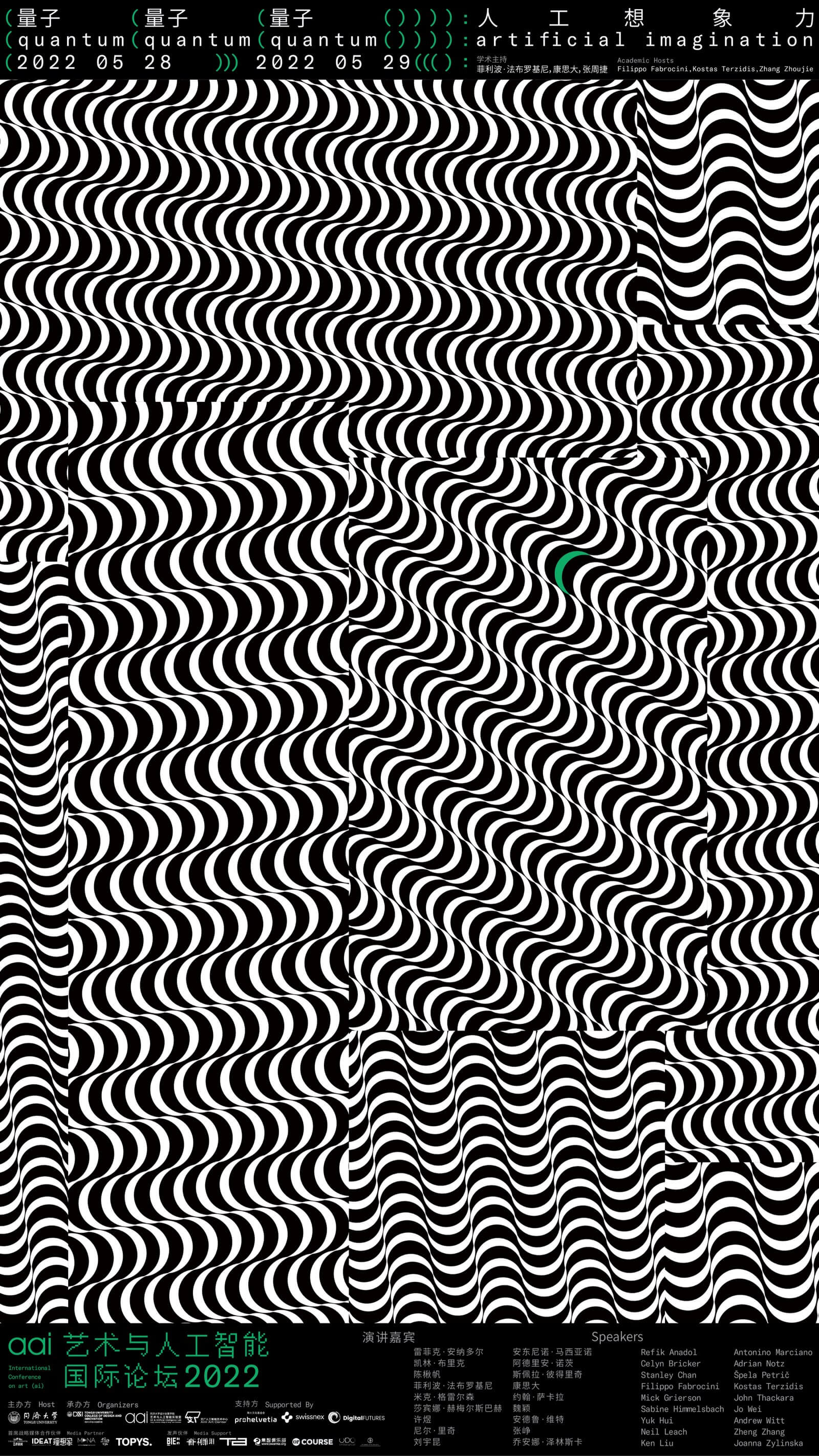
aai
International
Conference
on Art (AI)
2022
2022
Speakers
Agenda
2021
aai International Conference on art(ai) 2022
Subtitle:
(Quantum(Quantum(Quantum()))): Artificial Imagination
Host:
Tongji University
Organizers:
Art & Artificial Intelligence Lab, College of Design and Innovation, Tongji University
Aiiiii Art Center
Supported by:
Pro Helvetia Shanghai, Swiss Arts Council
Swissnex in China
DigitalFUTURES
Conference Dates:
May 28 – May 29, 2022
Academic Hosts:
Filippo Fabrocini, Kostas Terzidis, Zhang Zhoujie
Speakers:
Refik Anadol, Celyn Bricker, Stanley Chan, Filippo Fabrocini, Mick Grierson, Sabine Himmelsbach, Yuk HUI, Neil Leach, Ken Liu, Antonino Marciano, Adrian Notz, Špela Petrič, Kostas Terzidis, John Thackara, Jo Wei, Andrew Witt, Zheng Zhang, Joanna Zylinska
PROPOSAL
(Quantum(Quantum(Quantum()))): Artificial Imagination
F. Fabrocini, K. Terzidis
The cat is out of the box. Or in the box. Or both.
Erwin Schrödinger stated that if you place a cat and something that could kill the cat (a radioactive atom) in a box and seal it, you will not know if the cat is dead or alive until you open the box, which is to say, until the box is opened, the cat can be (in some sense) both "dead and alive". What does it feel like to be both alive and dead? Quantum theory implies a way of thinking that is related to this kind of phenomenon, i.e., the existence of complementarity: it is, and it is not. When microscopic particles are not observed, all possibilities exist simultaneously. When the observation leads to a mutation of one state into another, it can disturb the measured results. When one particle can pass through two slits at the same time, the objective world is a superposition of states in which all possibilities coexist. All matter has a wave-particle duality, assuming a fluctuating nature (possibility) when it is not observed and a particle nature (determinism) when it is observed. Quantum mechanics breaks the irrelevance of matter and consciousness, and consciousness cannot be excluded from the objective world.
What does it feel like to be the observer and the observed at the same time? By following the observer effect, we might ask what if the artist and the artwork coincide? When applying artificial intelligence to art, it goes beyond and introduces a quantum logic which is totally inconceivable to human mind. What a quantum artwork might encompass are myriads of patterns that the so-called “artist” might only allow to collapse into a single possible artwork. The artist acts just like the observer of an experiment in the sense that it constrains the potentially infinite patterns to collapse into the single artwork. In this sense, quantum computation is the witness of realities hidden from the world we see, touch, or experience. The traditionally linear patterns of control behind the creation of the work of art, in which the artist is the creator, and the artwork is the product of the artist, becomes obsolete to the extent that the artist becomes the negation of the universal mind, the “nous” of the Greek tradition, in which being and non-being as much as any other distinction are encompassed and overcome.
Following the context above, let’s suggest AI Art can only be understood through AI. Not that INTELLIGENT, but IMAGINATION. Instead of human imagination, can artificial imagination explore an unimaginable territory?
In this conference, we would like to explore a definition, a subjectivity, a possibility of artificial imagination. When it comes to artificial imagination, how can one imagine what one's mind cannot grasp? How can something be capable of imagination but not be human? Unbeknownst to us, is there another 'us'? And if so, if there is a better 'us', then why do we need us? For whom is Artificial Imagination intended? Meanwhile, we are also curious about the relationship between AI and art. AI appears as if it emerged out of nowhere, but it has always been here. Will AI be the "other" way to touch the future?